
SAG HARBOR CINEMA’S ANNOUNCES ITS
FOURTH ANNUAL FESTIVAL OF PRESERVATION
November 8-11, 2024 | Passes Now On Sale
—————————————
Featuring films by John Ford, Alfred Hitchcock, Franklin Schaffner, Dorothy Arzner, Sergei Parajanov, Julio Bracho, Walter Lantz, Ernie Gehr and more. Plus introductions and Q&As with archivists and filmmakers as well as the Preservation Panel and Brunch
———————————
The East End’s annual Martin Scorsese Presents: The Sag Harbor Cinema Festival of Preservation, dedicated to preserving film and its culture, returns for the fourth consecutive year at the Cinema. It will be held over Veterans Day weekend from Friday, November 8th through Monday, November 11th.
From Western to noir, pre-code to silent, American musicals to masterpieces of World Cinema, and cartoons to experimental, this year’s festival lineup will cover a wide swath of cinematic genres, eras, and artistic visions as well as explore different notions of preservation – with special accents on the importance of home movies and the great contributions of private film collectors to the cause of preservation.
————————
“I am so happy that our audience has embraced the Festival in its determination to articulate the idea of preservation through many different cinematic languages. I am also very grateful to the archivists, preservation specialists, organizations, and filmmakers that have enriched this special weekend with their presence and their work. They are back in force this year,” says SHC’s Founding Artistic Director Giulia D’Agnolo Vallan. “As a curator, private collectors have always been personal heroes of mine – the people to go to when all hopes for a print were lost. I am thrilled that we can shine a special light on their role in this edition of the Festival. Watching films, old and new, has also to do with preserving a certain innocence of the eye – be ready to rediscover the world again and again. Very few filmmakers throughout their career have trained your eye to that constant sense of wonder and rediscovery; Ernie Gehr is one of them, and I am honored he will be joining us with a special program of recent work.”
————————
Program highlights include brand new 4K restorations of John Ford’s 1956 monumental Western The Searchers with John Wayne and Natalie Wood and Alfred Hitchcock’s 1959 North by Northwest with Cary Grant and Eva Marie Saint, one of Hitchcock’s most brilliant declinations of the “innocent man unjustly accused” theme and a film whose unmatched blend of thriller and sophisticated comedy can be traced as an inspiration for the James Bond and Indiana Jones series.
The centennial of filmmaker Sergei Parajanov will be celebrated with a screening of what is widely considered his highest achievement The Color of Pomegranates (Sayat-Nova, 1969), a mesmerizing portrait of the Armenian troubadour Sayat-Nova. Parajanov, who was born in Georgia and of Armenian descent, studied cinematography under Oleksandr Dovzhenko in Moscow and subsequently made most of his films in Ukraine.
SHC’s exploration of classic popular Mexican Cinema shifts from the Emilio Fernandez noirs and melodramas featured at the 2021-2022 and 2023 Festivals to another master of the genres: director Julio Bracho. Considered one of the most important melodramas of the decade, Take Me in Your Arms (Llévame en tus brazos, 1954), features Cuban-Mexican actress and dancer Ninon Sevilla and was photographed by Gabriel Figueroa.
Following the success of last year’s special presentation devoted to Pioneering Women Filmmakers, this year’s program includes Dorothy Arzner’s 1929 pre-Code film The Wild Party with Clara Bow in her first speaking role. The film will be screened in 35mm, courtesy of Universal Pictures.
MoMA will bring another silent masterpiece to Sag Harbor with their restoration of Victor Sjöström’s 1928 silent film starring Lillian Gish The Wind, presented with the original Vitaphone soundtrack.
Film collector Eric Spilker, known for his passion for Technicolor, will be remembered with a rare screening (courtesy of the Harvard Film Archive) of his 35mm print of The Gang’s All Here, Busby Berkeley’s 1943 extravaganza with Portuguese-born “Brazilian Bombshell” Carmen Miranda.
SHC’s year round tribute to the Columbia Pictures centennial (that kicked off earlier this year with a Focus on Film Noir weekend) will wind down with new restorations of Phil Karlson’s 1958 western noir Gunman’s Walk (scripted by Frank Nugent who also wrote The Searchers and A Quiet Man) and Gus Van Sant’s 1995 black comedy To Die For starring Nicole Kidman and Joaquin Phoenix, in his breakthrough role.
And sci-fi makes its debut at the Preservation Festival with the world premiere restoration of Franklin Schaffner’s 1968 Planet of the Apes, the revolutionary film that launched an enduring Apes franchise, starring Charlton Heston.
Following his widely successful MoMA retrospective “Ernie Gehr: Mechanical Magic” earlier this year, avant-garde filmmaker Ernie Gehr will travel to Sag Harbor to introduce a special program of recent shorts that he has chosen specifically for the Festival.
Experimental film will also be the subject of one of the annual Preservation Panel presentations, with a spotlight on The Film-Makers’ Cooperative. Founded in New York City in 1961, in the heyday of the city’s underground cultural scene, the Cooperative was the first nonprofit organization devoted to the distribution of experimental cinema and has become an invaluable archive for seminal and rare work by more than 2,500 artists.
The Kids and Families Matinee will include two screenings of newly restored Universal cartoons from animator and producer Walter Lantz, the creator of Woody Woodpecker, Chilly Willy, Buzz Buzzard, among others.
The Museum of Modern Art will also present a program including home movies from Hollywood icons including Charlie Chaplin, Mary Pickford, Douglas Fairbanks Sr and Jr., as well as artists such as Aaron Copland, Edward Steichen, and Salvador Dalí.
The Festival of Preservation will be timed with the opening of a new exhibition on the Cinema’s third floor. The exhibit “Think Like a Filmmaker” features film objects, art pieces, and multi-media installations by acclaimed filmmaker Alan Berliner. Berliner’s AUDIOFILE will be central to the exhibition, an interactive audio installation consisting of 108 individual drawers containing a portable cassette tape recorder fitted with a continuous loop recording of a unique sound element. At rest, the work is silent; when engaged, any number of drawers, from 1 to 108, may generate sound simultaneously.
Over the weekend, the Festival will host introductions, conversations, and panels with distinguished guests from the preservation world including: Grover Crisp, Executive Vice President in charge of the Columbia and TriStar libraries at Sony Pictures; Cineric Laboratories; Kevin Schaeffer, Director of Restoration and Library management at the Walt Disney Company; Scott McGee, TCM’s Director of Original Productions; Dave Kehr, Curator in the Department of Film at MoMA; Joe Lauro, Historic Films Archive; and David Schwartz, The Film-Makers’ Cooperative.
Additional guests and details, as well as the participants to SHC’s annual Preservation Panel will be announced in the coming weeks.
Sag Harbor Cinema’s Festival of Preservation passes – which gives full access to all screenings, special events, and the Preservation Party – are now available on the cinema’s website, sagharborcinema.org, at $45 for members and $80 for non members. The full schedule and individual tickets to the films will be released on Friday, October 18th.
The annual Sag Harbor Cinema Festival of Preservation is made possible with the generous support of our presenting sponsor, Turner Classic Movies, and with additional support from the Suffolk County Film Commission. The Ernie Gehr special program is supported by the National Endowment of the Arts.
——————
ABOUT THE FILMS
***********************************************
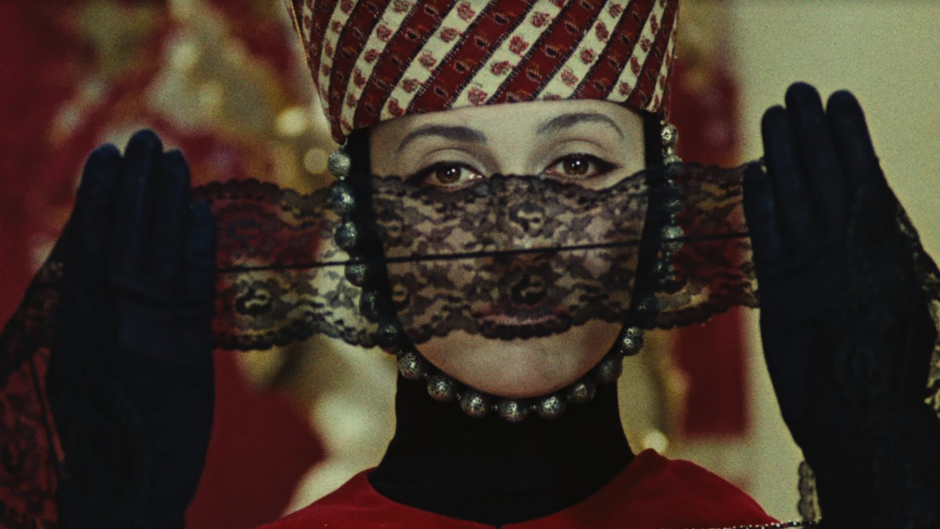
THE COLOR OF POMEGRANATES (SAYAT-NOVA)
Directed by Sergei Parajanov
Soviet Union, 1969; 78 mins, in Armenian and Georgian with English subtitles
A breathtaking fusion of poetry, ethnography, and cinema, Sergei Parajanov’s masterwork overflows with unforgettable images and sounds. In a series of tableaux that blend the tactile with the abstract, The Color of Pomegranates revives the splendors of Armenian culture through the story of the eighteenth-century troubadour Sayat-Nova, charting his intellectual, artistic, and spiritual growth through iconographic compositions rather than traditional narrative. The film’s tapestry of folklore and metaphor departed from the realism that dominated the Soviet cinema of its era, leading authorities to block its distribution, with rare underground screenings presenting it in a restructured form. This edition features the cut closest to Parajanov’s original vision, in a restoration that brings new life to one of cinema’s most enigmatic meditations on art and beauty.
The Color of Pomegranates was restored by The Film Foundation’s World Cinema Project and the Cineteca di Bologna, in association with the National Cinema Centre of Armenia and Gosfilmofond of Russia, and funded by the Material World Charitable Foundation.
~~~~~~~~~~~~~~~~~~~~~~~~~~~~~~~~

ERNIE GEHR, RECENT WORKS
Directed by Ernie Gehr
USA, 2023-24; 62 mins total, in English
High-Wire Act (2024) 4 min. Color. Sound
By Rail, To Boston (2024) 17 min. Color. Sound.
South Station (2024) 19 min. Color. Sound.
Carroll Gardens (2023) 22 min. Color. Silent.
Born in 1941, Ernie Gehr lives and works in New York. He began to work with 16mm film in l967 (which are preserved by MoMA) and since 2000 he has been working with video/digital media. An experimental filmmaker closely associated with the structural film movement of the 1970s, Gehr has completed around 150 pieces.
“I’m a city walker, and a city filmmaker of both interior and exterior phenomena, a chronicler of the invisible daily life in the city. With no fancy equipment or gadgets, I go about my business and try to blend with the crowd. Yes, sometimes I encounter resistance, and a ‘no-no’ gesture, but most of the time I’m left alone, especially in my old age, ‘that crazy old man.’ Thank you. Like breathing in and out, I trust intuition, and moment-to-moment developments. Yet I am also mindful and attracted to the mysterious and extraordinary ethereal possibilities of the mediums I work with, be it film or digital, all part of the larger and long history of the projected moving image. So life-like, yet so different! So new yet so ancient! Full of mysteries, pleasures and delight! Enjoy!” – Ernie Gehr. 2024
The Ernie Gehr special program is made possible by the National Endowment of the Arts.
~~~~~~~~~~~~~~~~~~~~~~~~~~~~~~~~
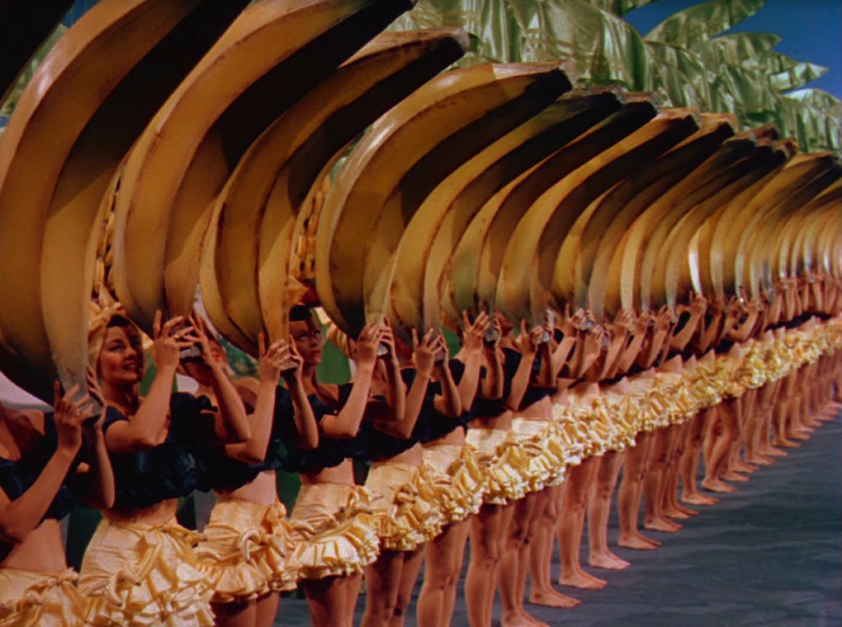
THE GANG’S ALL HERE (35mm)
Directed by Busby Berkeley
USA, 1943; 102 mins, in English
Employing large props, walls of water, sweeping crane shots, reverse motion and neon with new special effects, the title The Gang’s All Here might as well refer to the contents of Busby Berkeley’s bag of tricks, which sends this sentimental wartime love story soaring into outer space. James Ellison stars as a wealthy heir and Word War II hero who falls in love with a beautiful cabaret singer (Alice Faye) while already engaged. Happily uniting the otherworldly and exotic with the home front in the form of Carmen Miranda, the dizzying opening sequence also introduces the main elements of Berkeley’s world: disorienting surrealism, spatial deception, hyper-color and sheer, unfettered spectacle. Berkeley (one of the most important choreographers to Hollywood and Broadway) choreographed the entire film including the famous showpiece “The Lady in the Tutti Frutti Hat”—an erotic, hypnotic fruit-filled fantasy with a tropical twist—and the astonishing, hallucinatory finale “The Polka Dot Polka.”
IB Tech 35mm print from the Eric Spilker Collection at the Harvard Film Archive. Special thanks to Haden Guest and Mark Johnson.
~~~~~~~~~~~~~~~~~~~~~~~~~~~~~~~~

GUNMAN’S WALK
Directed by Phil Karlson
USA, 1958; 95 mins, in English
Phil Karlson’s seminal CinemaScope Western with an obsessive focus on dark familial burdens, Gunman’s Walk plays out the rivalry between a father and his surrogate son that escalates into a murderous confrontation worthy of Greek tragedy. Father and widower Lee Hackett (Van Heflin) is at odds with his blue-eyed boy Ed (Tab Hunter), rival of his good brother Davy (James Darren) for love-object Clee Chouard (Kathryn Grant). An unparalleled period piece that defines what then was the classic virtue of the adult Western. Screenwriter Frank Nugent, who a year earlier had written The Searchers, wrote many Ford westerns including The Quiet Man, Mister Roberts, and Fort Apache.
Restored in 4K by Sony Pictures Entertainment. Restored from the 35mm Original Picture Negative and the 35mm Original Magnetic Mono Soundtrack Master. 4K scanning and digital image restoration by Cineric, Inc. Sound restoration by BluWave Audio. Color grading, conforming, additional image restoration, and DCP creation (preserving the original Cinemascope aspect ratio 2.55:1) by Motion Picture Imaging with colorist Sheri Eisenberg. Restoration supervised by Grover Crisp.
~~~~~~~~~~~~~~~~~~~~~~~~~~~~~~~~
HOME MOVIES FROM THE MOMA COLLECTION
75 mins, silent with a presentation from MoMA
The Museum of Modern Art will present a program from the MoMA collection including home movies from silent film icon Charlie Chaplin, “America’s Sweetheart” Mary Pickford, “The King of Hollywood” Douglas Fairbanks Sr and Jr, surrealist Salvador Dali, composer Aaron Copland, art giant Gertrude Stein, and 20th Century modern artists Eward Steichen, Constantin Brâncuși and others.
Program by Ron Magliozzi and Katie Trainor.
~~~~~~~~~~~~~~~~~~~~~~~~~~~~~~~~
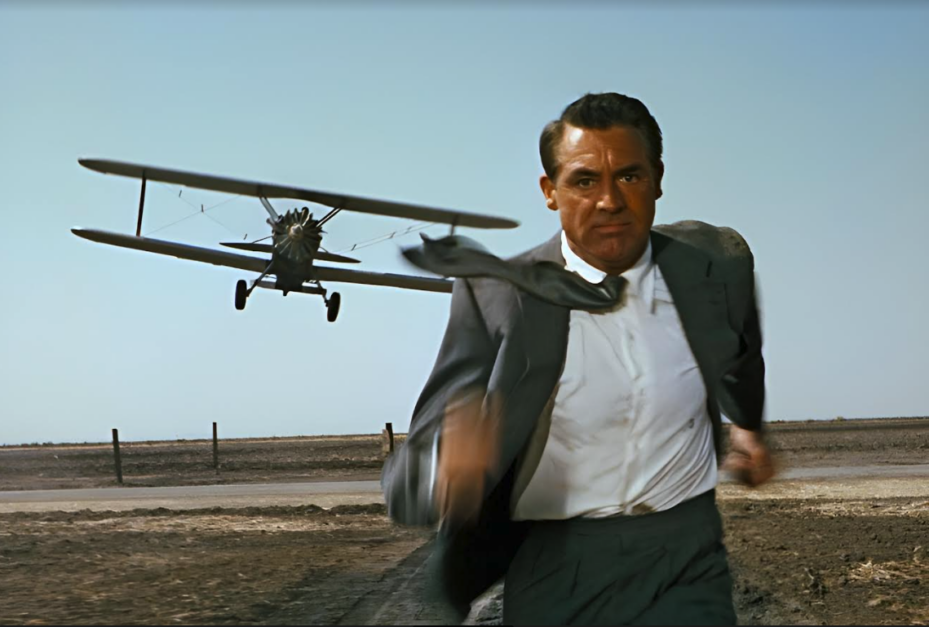
NORTH BY NORTHWEST
Directed by Alfred Hitchcock
USA, 1959; 136 mins, in English
Sixty-five years ago, Alfred Hitchcock released his stylish, brilliantly self-parodic espionage thriller, which changed every Hollywood action production in its wake. A successful Madison Avenue executive (Cary Grant) is mistaken for a Fed by foreign agents (led by James Mason, villainously debonair) and pushed into a cross-country medley of imposing set pieces. Wryly referred to as the first James Bond film, this VistaVision marvel deploys the director’s familiar-sounding The Wrong Man plot structure but exaggerates every detail—including Bernard Herrmann’s kaleidoscopic score and Saul Bass’s kinetic opening title sequence—on a dizzying scale, taking us everywhere from the posh and modernist interiors of New York City and Chicago to a vast, flat, Midwestern cornfield to, finally, the gigantic faces of Mount Rushmore above Rapid City. Also starring Eva Marie Saint, Martin Landau, Leo G. Carroll, and Edward Platt.
Restored by Warner Bros in collaboration with The Film Foundation.
Scanned in 13K by Warner Bros. at Motion Picture Imaging laboratory, from the original 8 perf 35mm VistaVision camera negative. Restoration work completed in 6.5K. Newly restored version approved by The Film Foundation.
~~~~~~~~~~~~~~~~~~~~~~~~~~~~~~~~
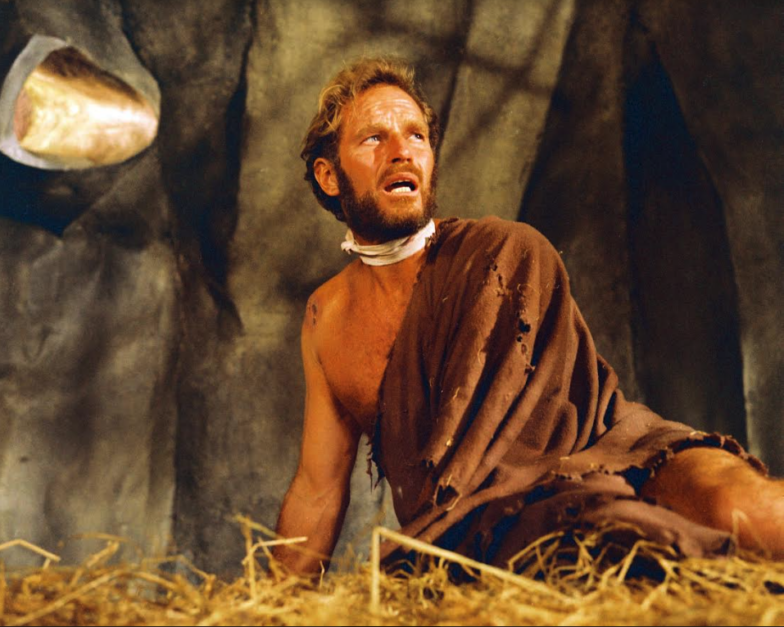
PLANET OF THE APES
Directed by Franklin J. Schaffner
USA, 1968; 112 mins, in English
Rated G
World Premiere Restoration
With a screenplay by Rod Serling (The Twilight Zone) and Michael Wilson (The Bridge on the River Kwai), based on the 1963 novel by Pierre Boulle, this classic sci-fi tale brings us an astronaut crew (Charlton Heston, Jeff Burton, and Robert Gunner) that crash-lands on a planet in the distant future, where intelligent talking apes are the dominant species — and humans are the oppressed and enslaved. Also starring Roddy McDowall, Kim Hunter, James Daly, Maurice Evans, and James Whitemore as apes, in groundbreaking prosthetic makeup by artist John Chambers. Gorgeously shot by Leon Shamroy (Cleopatra) and edited by Academy Award-winner Hugh S. Fowler (Patton, The Seven Year Itch).
The original Planet of the Apes, based on French author Pierre Boulle’s 1963 novel La Planète des signes, was a surprise success that triggered four sequels – Beneath the Planet of the Apes (1970), Escape from the Planet of the Apes (1971), Conquest of the Planet of the Apes (1972), and Battle for the Planet of the Apes (1973) – and also a live-action television series in 1974 and an animated series in 1975. In 2001, director Tim Burton remade the original Planet of the Apes, starring Mark Wahlberg and Helena Bonham Carter, but it failed to revive the series. However, a separate reboot Rise of the Planet of Apes (2011) succeeded in bringing the series back with a two sequels – Dawn of the Planet of the Apes (1970) and War for the Planet of the Apes (2017) – to ultimately deliver one of contemporary cinema’s most accomplished trilogies. In 2019, further sequels to the 2011 reboot were announced with Kingdom of the Planet of the Apes released in 2024.
Restored by The Walt Disney Studios, featuring picture restoration by Roundabout Entertainment and audio restoration by Audio Mechanics.
~~~~~~~~~~~~~~~~~~~~~~~~~~~~~~~~
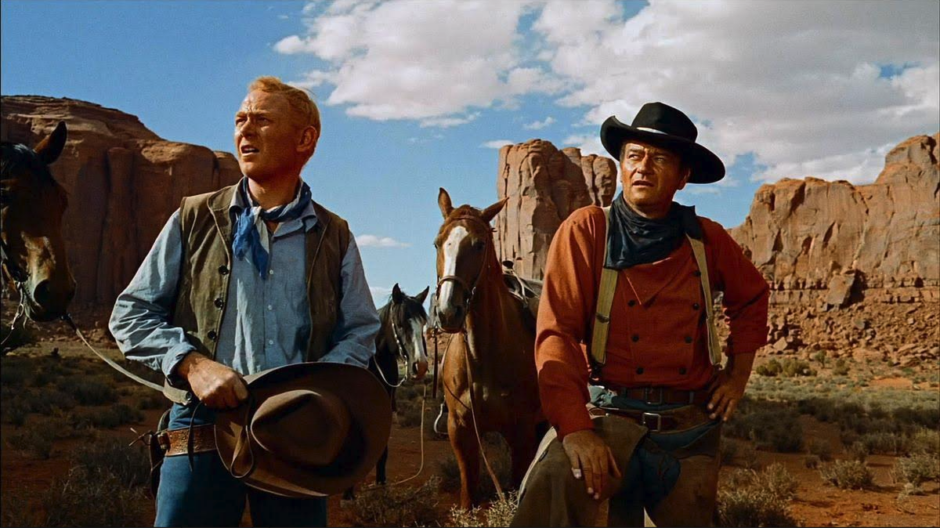
THE SEARCHERS
Directed by John Ford
USA, 1956; 119 mins, in English
Working together for the 12th time, John Wayne and director John Ford forged The Searchers into a landmark Western offering an indelible image of the frontier and the men and women who challenged it. Wayne plays an ex-Confederate soldier seeking his niece, captured by Comanches who massacred his family. He won’t surrender to hunger, thirst, the elements or loneliness. Beautifully shot by Winton C. Hoch (The Quiet Man, Voyage to the Bottom of the Sea), thrillingly scored by Max Steiner (Gone with the Wind, Casablanca) and acted by a wonderful ensemble including Jeffrey Hunter, Vera Miles, Natalie Wood and Ward Bond. Martin Scorsese cites The Searchers as one of the most influential films in his work (particularly for Taxi Driver): “In truly great films — the ones that people need to make, the ones that start speaking through them, the ones that keep moving into territory that is more and more unfathomable and uncomfortable — nothing’s ever simple or neatly resolved. You’re left with a mystery.”
Restored by Warner Bros in collaboration with The Film Foundation.
The Searchers was filmed in VistaVision and released in 1.85. Scanned in 13K by Warner Bros. at Motion Picture Imaging laboratory, from the original 8 perf 35mm VistaVision camera negative. Restoration work completed in 6.5K. Newly restored version approved by The Film Foundation.
~~~~~~~~~~~~~~~~~~~~~~~~~~~~~~~~
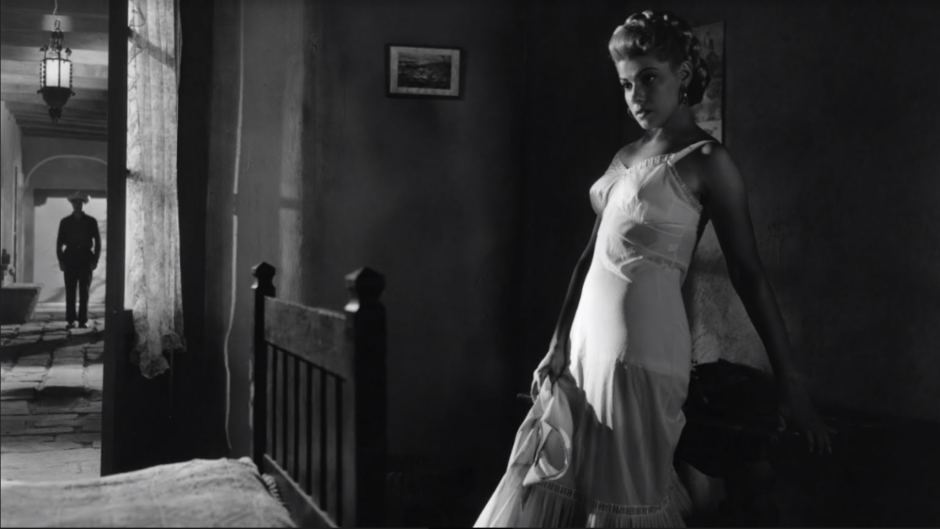
TAKE ME IN YOUR ARMS (LLÉVAME EN TUS BRAZOS)
Directed by Julio Bracho
Mexico, 1954; 91 mins, in Spanish with English subtitles
Class conflicts and erotic torments come to a head in Julio Bracho’s formally daring masterpiece, one of the most important melodramas of the decade. Take Me in Your Arms follows a fisherman’s daughter (the incomparable Ninón Sevilla, also serving as an uncredited producer with brothers Pedro and Guillermo Calderón) through a nightmare of exploitation and misery—along the way becoming a famous soubrette—in order to erase her father’s debts while she tries, again and again, to reunite with her true love (Armando Silvestre). Bracho and esteemed cinematographer Gabriel Figueroa (Enamorada, The Pearl, Victims of Sins, Los Olvidados, Night of the Iguana) bring exquisite atmospherics to each shot with carefully calibrated lighting and meticulous compositions—on location in Veracruz or via stunningly designed and choreographed musical sequences—but the film equally belongs to Sevilla, whose unforgettable performance elevates this rapturous portrait of agitated desire into something far more complicated and ahead of its time.
A Janus Films release. 4K restoration by Permanencia Voluntaria and Cinema Preservation Alliance with the generous support of Academy Film Archive, Paso del Norte Community Foundation, FOCINE.
~~~~~~~~~~~~~~~~~~~~~~~~~~~~~~~~

TO DIE FOR
Directed by Gus Van Sant
USA, 1995; 106 mins, in English
Director Gus Van Sant (Drugstore Cowboy, My Own Private Idaho) adds provocative layers of meaning to this darkly funny examination of suburban sociopathy that hits all the noir trademarks. The all-American obsession with celebrity turns monstrous in this deliciously subversive (and disturbingly prescient) satire of our television-mediated, true-crime-obsessed age. In a career breakthrough, Nicole Kidman delivers a diabolical deconstruction of the girl next door as a local TV weather reporter whose perfectly perky facade belies a murderous heart, as her ruthless pursuit of fame ensnares three disaffected teens in a sordid, tabloid-ready scandal. Van Sant deftly deploys shifting perspectives, faux-documentary interviews, and a supporting cast featuring Joaquin Phoenix (in the role that put him on the map), Matt Dillon, and Casey Affleck.
Restored in 4K by Sony Pictures Entertainment. 4K scanning and digital image restoration by Prasad, Hollywood, of the 35mm Picture Negative. Audio restoration by BluWave Audio, with 5.1 created at Post Media Center, Sony Pictures Studios. Color grading, conforming, 4K DCP completed at Motion Picture Imaging with colorist Sheri Eisenberg, and approved by cinematographer Eric Alan Edwards. Restoration supervised by Grover Crisp.
~~~~~~~~~~~~~~~~~~~~~~~~~~~~~~~~
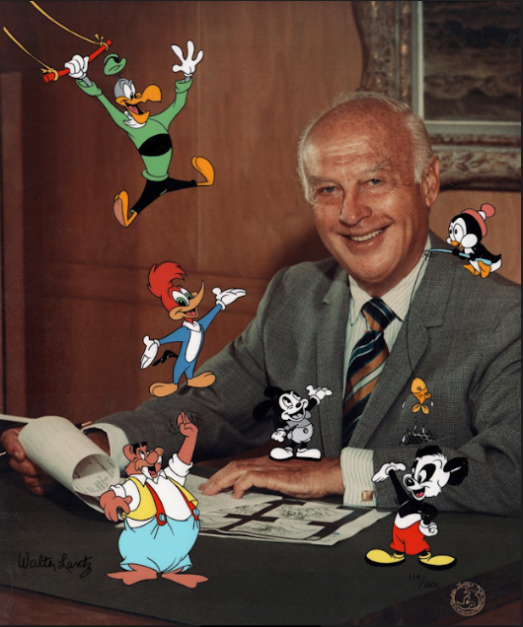
WALTER LANTZ AT UNIVERSAL – EARLY CLASSIC CARTOONS
Approx 70 mins
A special program of newly restored classic cartoons from prolific animator, director, and producer Walter Lantz from directors Paul Smith, Tex Avery, James Culhane, and Lantz himself. Featuring, among others, legendary characters Woody Woodpecker (the screwball mascot of Universal Pictures), Chilly Willy (the only penguin not equipped for cold weather), Smedley Dog (an anthropomorphic sidekick hound), and Professor Dingledong (a German-accented mad scientist). Lantz’s studio, founded in 1935, produced cartoons for Universal Pictures. Lantz is one of the three animation pioneers to receive an Academy Award for his entire career along with Walt Disney and Chuck Jones.
4K Restoration by Universal Pictures from the 35mm 2-Strip and 3-Strip Original Negatives. Restoration services conducted by NBCUniversal StudioPost and Illuminate Hollywood.
~~~~~~~~~~~~~~~~~~~~~~~~~~~~~~~~
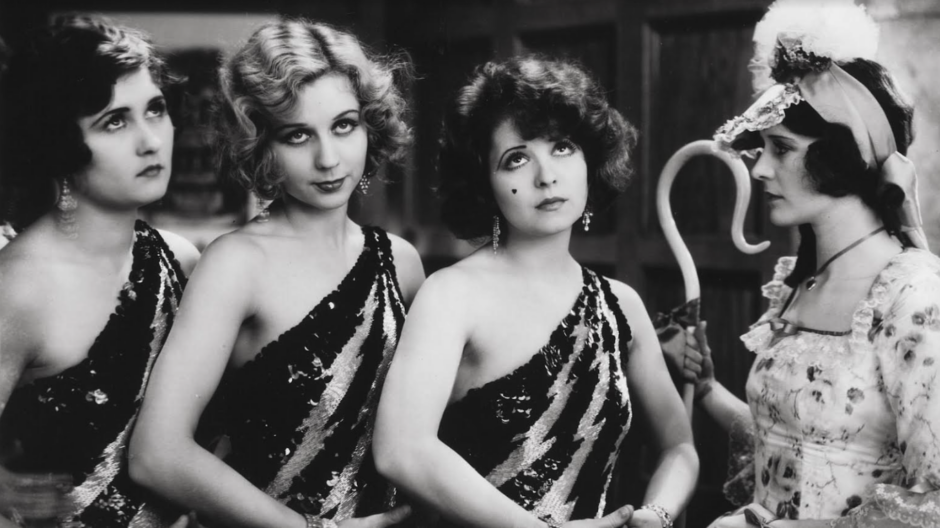
THE WILD PARTY (35mm)
Directed by Dorothy Arzner
USA, 1929; 77 mins, in English
Dorothy Arzner – one of Hollywood’s only female directors in the early 20th century who helped launch the careers of Katharine Helpburn, Lucille Ball, and Rosalind Russell – was the first woman to direct a film with sound. The Wild Party, Paramount’s first talking picture, was also fans’ first chance to hear silent era star Clara Bow talk. She plays college student Stella Ames, navigating compromising situations with (and, later, her love for) Professor “Gil” Gilmore (Fredric March). The female students at the college are boy-crazy and rarely caught learning anything; the antics don’t conform to recent notions of appropriate faculty behavior, to say the least. Yet even at this distance, the movie has a rollicking appeal—and that’s due mostly to Bow, one of Hollywood’s most charismatic performers. The Wild Party was a hit, and Bow continued to make successful talkies until her well-known personal and financial problems led to a stay in a sanatorium, and Paramount released her from her contract. Her last two films (Call Her Savage and Hoop-La) were made at Fox, after which she retired to Nevada with her husband, Rex Bell, and two sons.
35mm print courtesy of Universal Pictures.
~~~~~~~~~~~~~~~~~~~~~~~~~~~~~~~~
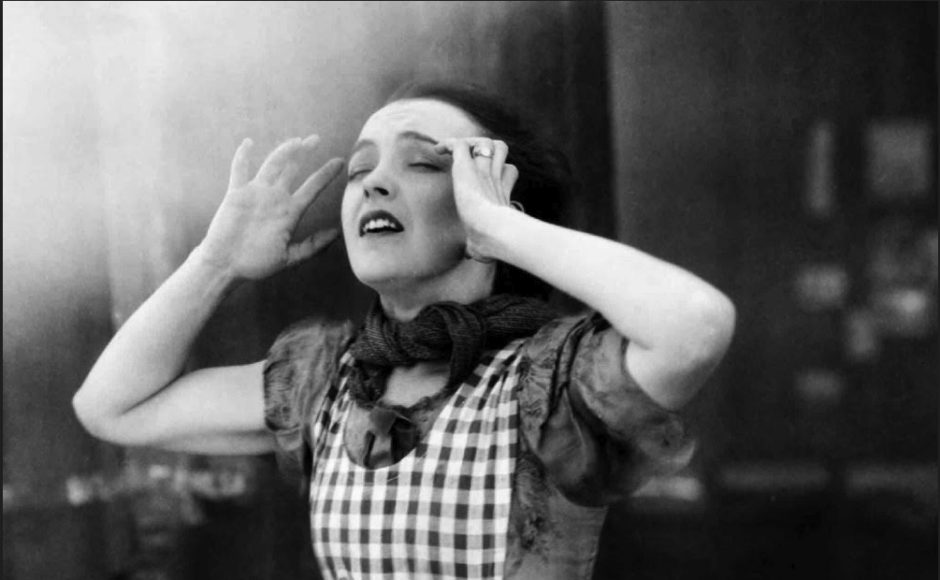
THE WIND
Directed by Victor Sjöström
USA, 1928; 72 mins, silent
From his first, pioneering work in Sweden, Victor Sjöström was concerned with the intersection of landscape and psychology, with the way the natural world both shaped the substance of his characters’ thoughts and feelings, and reflected those thoughts and feelings in its metaphoric grandeur. Sjöström largely left his interest in landscape behind in Sweden when he came to America in 1923, with the spectacular and singular exception of The Wind. The setting is the desert of western Texas, a land of high temperatures, low rainfall, and no shade, into which a frail young woman from the east (Lillian Gish, in one of the great performances of silent film) has been thrust against her will, totally unprepared for the desolation—physical, social, psychological—that awaits her. The assault is total and unrelenting, like the raw wind that never ceases to blow across the lunar landscape. The exteriors were shot, under difficult conditions, in the Mojave Desert of southern California.
Restored by The Museum of Modern Art with support from the Lillian Gish Trust for Film Preservation.
~~~~~~~~~~~~~~~~~~~~~~~~~~~~~~~~

As a not-for-profit 501(c)3, community-based organization, Sag Harbor Cinema is dedicated to presenting the past, present and future of the Movies and to preserving and educating about films, filmmaking, and the film-going experience in its three state-of-the-art theaters. The Cinema engages its audiences and the community year-round through dialogue, discovery, and appreciation of the moving image – from blockbusters to student shorts and everything in between. Revitalized and reimagined through unprecedented community efforts to rebuild the iconic Main Street structure after a fire nearly destroyed it in 2016, SHC continues a long historic tradition of entertainment in the heart of Sag Harbor Village.
————————–
=======================================================
AAQ / Resource: Christopher Jeffrey Architects
=========================================================

AAQ / Resource: Westhampton Architectural Glass
_______________________________________________________________

